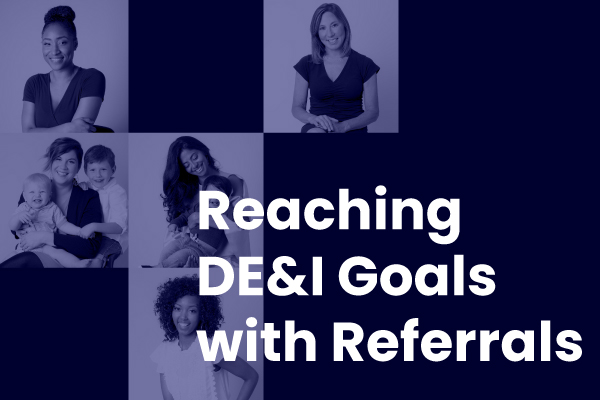If you’ve been reading our series on “Diverse Talent Cloud -- the Future of Work,” you know diversity is good for business. Not only is it critical to increasing company profitability, efficiency and innovation, it’s also a key component for attracting and retaining the talent of tomorrow.
According to Gartner, the gig economy is growing three times faster than the overall U.S. workforce.
👉 It’s projected that by 2023, more than half (52%) of the U.S. workforce will be gig economy workers. What’s more, by 2025, 75% of the workforce will be made up of millennials -- the most diverse group in American history, with 44.2% identifying as “non-white.”
The importance of total talent diversity in all areas of your workforce, regardless of how they are employed (full-time, part-time, contract, SOW, IC, gig), is more critical than ever. According to McKinsey, “Companies pulling back on I&D now may be placing themselves at a disadvantage: they could not only face a backlash from customers and talent now but also, down the line, fail to better position themselves for growth and renewal.”
How referrals can help achieve your DE&I goals
Traditionally, research has shown people tend to refer people like themselves. If you don’t have a diverse workforce, there is concern any referrals won’t help achieve those goals. But if companies are thoughtful in their approach to referral programs, diversity can actually increase through this network.
That’s because they work. So, how can companies ensure they attract diverse referrals?👉 U.S. companies hire 29 percent of their workforce through referrals -- and at least 88 percent of employers welcome referrals or have specific programs established to receive and compensate for them.
Be creative in how you ask
Asking your full-time employees, talent partners and contingent labor and for diverse referrals is one simple way to get diverse talent through the door. Pinterest asked their employees to refer candidates from underrepresented backgrounds and saw a 24% increase in the percent of women referred and a 55x increase in the percentage of candidates from underrepresented ethnic backgrounds.
Another way is to ask people that aren’t a part of your existing workforce. This can include friends, investors, customers, partners and social media followers for qualified, diverse talent. Create targeted messaging for each, which can draw specific types of talent from your communities. Be creative!
Make it a part of your brand
💡 The millennial and Gen Z generations are the most diverse in history: only 56% of the 87 million millennials in the country are white, so why not use them to help drive diversity for your brand?
Identify millennials in your organization who are working or taking part in internship programs or through your college outreach programs and ask them to refer diverse candidates.
Additionally, highlight the importance of diversity in your employee referral collateral. When communicating your referral program policy, make sure you use inclusive language, focused imagery and use it as one more place to drive home the importance of diversity in your company’s culture.
Consider more than just incentives
Many referral programs are set up the same way—a person refers a candidate and, if they are hired and stay with the organization for a certain period of time, they are paid a bonus.
But this puts the onus on the employee or contractor and isn’t always an intrinsic reason someone refers a person.
👉 Research shows 35% of employees refer to help their friends, 32% do it to help their company, 26% do it to be seen as a valuable colleague. Only 6% do it for money and recognition.
Be thoughtful in how referral programs are established upfront. This can be as simple as asking for feedback from your workforce on what is meaningful to them when referring candidates. One way to do this is by creating social and professional networking groups internally and creating centered spaces at work that all workers can be a part of. Provide them with detailed information that they can forward on to former colleagues and diverse candidates, so they don’t have to do the legwork themselves.
Engage with partners who deliver on DE&I
Having partnerships with organizations that take diversity seriously and can help with the referral and networking of diverse talent is another option. The Mom Project is the only technology and services organization on the market that connects companies with curated communities of pre-vetted and ready-to-work gender and ethnically diverse talent. Women are 3.2x more likely to engage with The Mom Project and, as a result, refer other working moms into our network consistently—women that are educated, highly qualified and ready to make an impact.
💜 At The Mom Project, we believe that strong DE&I initiatives are the key to building better, more balanced workplaces. It’s our mission to cultivate inclusive work environments by providing businesses with progressive staffing solutions and support to reach their DE&I goals while also creating opportunities for people with less-privileged identities.
As a part of our commitment to this topic, this is the sixth in the series “Diverse Talent Cloud -- the Future of Work,” intended to help shed light on their importance, ways to integrate them into your existing talent strategies, implementation best practices, and how to best support these initiatives organizationally. We look forward to sharing more with you soon. In the meantime, please check out more information here.




